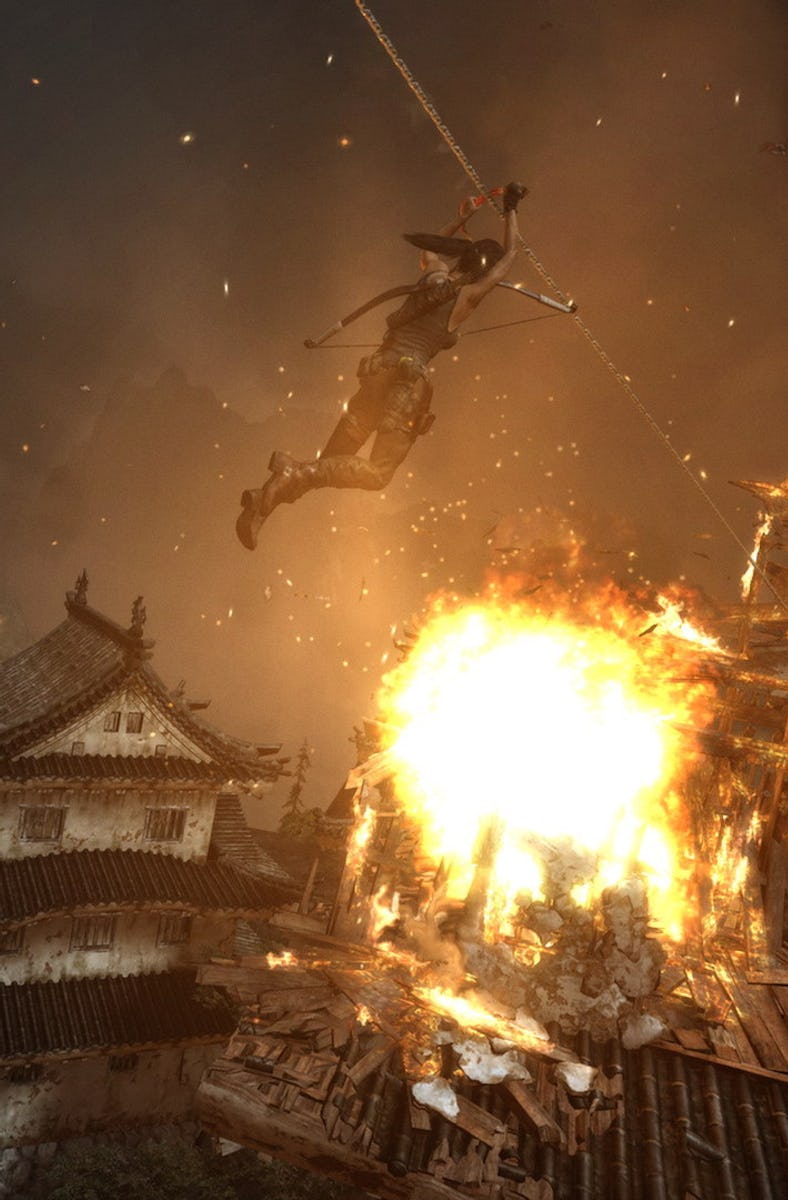How to Reboot a Video Game Icon
“I make my own luck.”

Few video game protagonists carry a legacy as rich and complicated as Lara Croft, a name synonymous with the action-adventure and platformer genre that Tomb Raider helped popularize in 1999. On the one hand, Lara’s exploits as an archaeologist and treasure hunter are nothing short of legendary. On the other, Lara evokes complex discourse about the problematic lens of the male gaze, an aspect that is unfortunately ingrained into her history and evolution. But despite all that baggage, in the early 2010s, one game found a way to reinvent this iconic character in the best way possible.
Developed by Crystal Dynamics, the Tomb Raider reboot is the first arc of the Survivor trilogy that etches Lara’s origins and mythos, reimagined from a fresh, enthralling perspective. This iteration of Lara is not the coolly-confident tomb raider/swashbuckler fans know and love. Instead, she’s a younger, inexperienced explorer thrust into the jaws of a deadly conspiracy on the lost island of Yamatai. An amalgamation of intense platforming and stealth that relies on quick-time events, Tomb Raider highlights the wonders of exploration amid constant dangers introduced right after the prologue where Lara has to escape a cavern with only a burning torch in hand.
This version of Lara has yet to become the battle-hardened adventurer whose grit and bravado eventually cement her iconic status, which allows players to explore the finer details of her personality when forced to prove her mettle on the mysterious island. A fresh, intuitive spin on gameplay mechanics also elevates the material. Salvaged weapons can be free-aimed during close combat or stealth kills, and the Survival Instinct mode can be used to scope out enemies, loot, or clues for puzzles. As there is a heavy emphasis on exploration and resource gathering, it is key to customizing more effective weapons, while upgrading items integral to smooth progression through the narrative.
As perfect as Tomb Raider has proven itself to be, especially after later entries in the reboot trilogy (Rise of the Tomb Raider and Shadow of the Tomb Raider) successfully built and expanded upon their predecessor, it is not the only available version of the game. A remastered version, titled Tomb Raider: Definitive Edition, was reissued for PlayStation 4 and Xbox One on January 28, 2014 and marketed as an upscaled edition with 4K graphics targeted at next-gen consoles. Bonus content included all playable DLCs, digital versions of the Tomb Raider comics, and a beautiful mini-artbook. While the Definitive Edition surely looks attractive, is it worth it after all these years, especially considering its steeper price point?
Tomb Raider’s Survivor trilogy explored a more nuanced version of Laura Croft.
For starters, the Definitive Edition excelled in successfully porting the reboot to what were then next-gen consoles, providing a more visceral immersion into the chaotic world of Yamatai, where Lara and her expedition crew find themselves shipwrecked after an unexpected storm. This enhanced attention to detail adds an edge to the endless thrill of exploration, and the inclusion of free DLC weapons, characters, and outfits greatly improves upon the original’s multiplayer mode. Although a multiplayer mode is not the selling point of a critically acclaimed Tomb Raider game, these additions can be fun for those who enjoy player-versus-player combat scenarios, available in the form of Team Deathmatch, Private Rescue, and Cry for Help.
Comparing the PS4 and Xbox versions of this edition would establish that the former has a slightly smoother frame rate, although both versions come with their platform-specific gameplay mechanics integrated for a more player-friendly experience (both intuitive and nominal). For instance, the PS4’s Dualshock 4 controller lights up whenever Lara uses her torch or shoots her weapon, while the Xbox version lets players use Kinect to switch weapons and use voice commands to navigate the menu and inspect relics with smart gestures. Although these features are pretty cool, they mostly serve as an addition to the core gameplay, prioritizing player comfort and preference over in-game essentiality.
Ouch...
Considering how comprehensive and brilliant the 2013 Tomb Raider is in terms of reinventing Lara while staying true to its franchise roots, the Definitive Edition might seem like a special bundle that no one asked for. However, there is value in its existence, as it is a stellar entry-point for those who have never played the original or the reboot, ready to experience her origins in beautiful, harrowing detail.
The updated graphics undoubtedly add to the anxiety-inducing dread of exploring an island inhabited by shady mercenaries and members of a vicious cult, who are devoted to a fearsome, shamanic queen lost to oblivion. The transition from Lara being a lost lamb in a decrepit cavern to a full-blown survivalist feels especially rewarding in the Definitive Edition, and the bundled DLCs allowed for a more streamlined understanding of Lara’s arc.
Although the Tomb Raider reboot also conveys these sentiments remarkably well, the next-gen remaster feels like a lavish treat, meant to be experienced either by Tomb Raider completionists or first-time initiates entering a world full of promise and adventure.